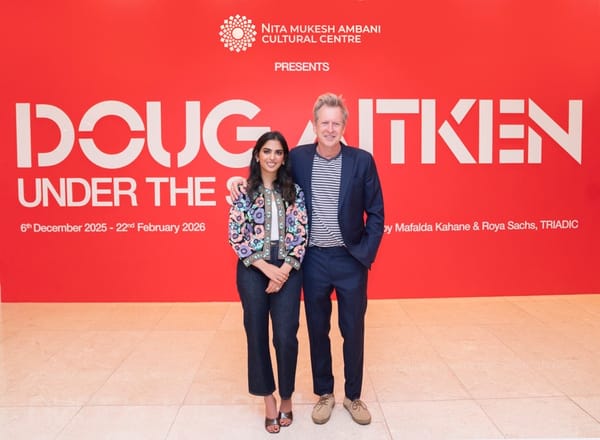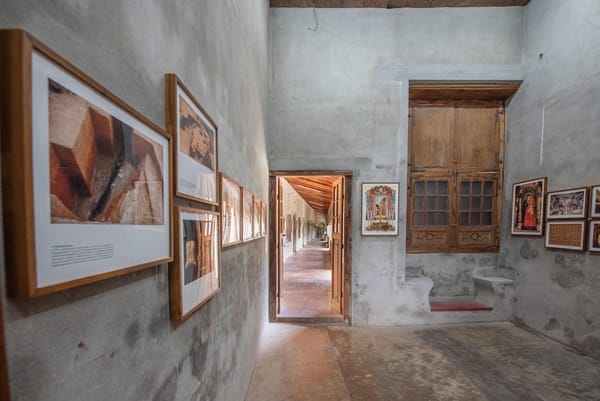The Art of Being Seen: Navigating Visibility and Exposure in the Art World
In the competitive art world, visibility is crucial yet elusive. Artists face frustration as their work gets lost in the oversaturated digital landscape, while the desire for recognition drives them to navigate the challenges of both social media and traditional exhibitions.

In the ever-evolving landscape of the art world, visibility and exposure have become paramount to an artist's success. Yet, achieving these can be a source of frustration, desire, and fear for many artists. The pursuit of recognition is no longer just about the quality of one’s work; it’s about being seen, appreciated, and validated in a saturated and competitive environment.
The Frustration of Invisibility
For many artists, one of the most pressing frustrations is the difficulty of gaining visibility. In a world where social media platforms like Instagram can propel an artist to stardom overnight, the process of getting noticed has become both more accessible and more elusive. The sheer volume of content being shared daily makes it challenging for any individual artist to stand out. This oversaturation leads to a feeling of invisibility, where even the most diligent efforts seem to go unnoticed.
Artists pour their hearts and souls into their work, only to find that it often gets lost in the vast ocean of images, posts, and videos. The algorithm-driven nature of platforms like Instagram exacerbates this issue, where even the most compelling art can be overlooked if it doesn't fit into the ever-changing metrics that dictate what gets seen. This creates a cycle of frustration, where artists feel compelled to constantly produce new content, often at the expense of their creative process, just to keep up with the demand for visibility.
Moreover, traditional avenues for exposure, such as galleries and exhibitions, are becoming increasingly difficult to navigate. The competition is fierce, and many artists find it hard to break through the barriers that stand between them and the opportunity to showcase their work. The gatekeepers of the art world, from curators to collectors, often have their biases, making it even harder for emerging artists to gain the recognition they deserve.
The Desire for Recognition and Fame
Despite these challenges, the desire for recognition and fame remains a powerful motivator for artists. The idea of having one’s work acknowledged by peers, critics, and the public is a driving force behind the relentless pursuit of visibility. For many, the ultimate dream is to have their art exhibited in prestigious galleries, featured in renowned publications, or even go viral on social media.
This desire is not merely about vanity; it’s about validation. Recognition affirms an artist’s worth and talent, and it opens doors to new opportunities. It can lead to financial success, collaborations, and the ability to reach a wider audience. For many artists, fame is seen as the ultimate measure of success, a tangible indication that their work has made an impact.
However, the pursuit of fame comes with its own set of challenges. The art world is not immune to the allure of trends, and artists may feel pressured to conform to popular styles or subjects to gain recognition. This can stifle creativity and lead to a loss of authenticity, as artists may prioritize what is marketable over what is true to their vision. The desire for fame can become a double-edged sword, where the quest for recognition leads to compromises that undermine the very essence of what makes an artist unique.
The Fear of Being Overlooked
Perhaps the most profound fear for any artist is the fear of being overlooked or ignored. In a world where visibility is often equated with success, the prospect of remaining unseen is daunting. This fear can be paralyzing, leading to self-doubt and questioning of one’s talent and worth.
The fear of being overlooked is exacerbated by the transient nature of the digital world. The rapid pace at which content is consumed and discarded means that even those who achieve momentary visibility may find themselves quickly forgotten. This creates a constant pressure to remain relevant, to continually produce work that captures attention, and to maintain a presence in the public eye.
For many artists, this fear is deeply personal. Art is often an expression of one’s innermost thoughts and emotions, and the prospect of that expression being met with indifference is heartbreaking. The vulnerability that comes with sharing one’s work with the world is immense, and the fear of rejection or invisibility can be a significant barrier to creative risk-taking.
This fear also extends to the practical aspects of an artist’s career. Being overlooked can mean missed opportunities, financial instability, and the inability to sustain a career in the arts. For emerging artists, in particular, the fear of never breaking through can be overwhelming, leading some to abandon their artistic pursuits altogether.
Finding a Balance
Navigating the frustrations, desires, and fears associated with visibility and exposure in the art world is a delicate balance. For many artists, the key to overcoming these challenges lies in finding ways to stay true to their creative vision while also embracing the realities of the modern art market.
One approach is to build a strong, authentic personal brand that resonates with audiences on a deeper level. Rather than chasing trends or trying to please everyone, artists who focus on what makes their work unique are more likely to build a loyal following. This can involve using social media strategically, not just as a platform for self-promotion but as a means of connecting with others, sharing stories, and engaging with the community.
Additionally, diversifying the avenues for exposure can help alleviate the frustration of relying too heavily on any one platform or method. This might include participating in local art fairs, collaborating with other artists, or seeking out non-traditional spaces to showcase work. By expanding the ways in which they engage with the world, artists can increase their chances of being seen and appreciated.
Lastly, embracing the journey rather than fixating on the destination can help mitigate the fear of being overlooked. The art world is unpredictable, and success can come in many forms. For some, it may be a slow and steady climb; for others, it may come in unexpected bursts. By focusing on the process of creation and the joy it brings, artists can find fulfilment in their work, regardless of how much visibility they achieve.
Conclusion
The quest for visibility and exposure in the art world is fraught with challenges, but it is also a journey of growth, self-discovery, and resilience. By acknowledging the frustrations, harnessing the desires, and facing the fears head-on, artists can navigate this complex landscape with confidence and clarity, ultimately finding their place in the world of art.





